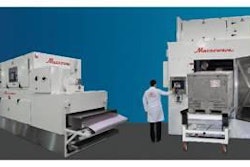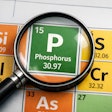
Amino acids are the building blocks of proteins, and proteins are the building blocks of life, according to the Textbook of Veterinary Physiological Chemistry (2004). “Proteins in your pet’s body (and our bodies) are key to various critical functions," further explains Lily Ock, DVM, associate veterinarian for Banfield Pet Hospital. "For example, proteins serve as catalysts, transport other molecules, act as storage units of vital elements, major components of the immune system which defends the body against illness, make up muscle fibers and provide structural support. Some proteins are synthesized in your pet’s body by amino acids, while others must be provided by your pet’s diet.”
Protein has many functions in a companion animal’s body, but is best known for supplying amino acids to build hair, skin, nails, muscles, tendons, ligaments and cartilage. Protein also plays a primary role in hormone and enzyme production. The protein in petfoods can be supplied by animal sources, plant sources or a combination of the two. Common animal-based protein sources used in petfood include chicken, lamb, fish meal, and beef; while common plant-based protein sources include corn-gluten meal and soybean meal.
The Association of American Feed Control Officials (AAFCO) has established that dog foods provide 22% DM protein for growth and at least 18% DM protein for maintenance. “Feeding a healthy dog above the recommended protein amount will not result in true toxicity,” says Ock. “Healthy dogs will be able to metabolize and excrete the excess.”
Recent studies by The Iams Company examined how the type of protein in a diet affected body composition of adult and senior dogs (see Figure 2). Adult and senior dogs were fed diets with varying amounts of protein from chicken and corn gluten meal, and their body composition (muscle versus fat tissue) was analyzed. In addition, levels of key blood and muscle proteins were measured.
Compared with dogs fed a diet with 100% chicken protein, dogs fed diets with decreasing levels of chicken and increasing levels of corn gluten meal had:
- decreased lean tissue,
- increased body fat, and
- decreased levels of blood proteins routinely used as markers of superior nutritional status.
This was independent of the overall dietary protein level (12 or 28%), which was also examined in each of the four test groups.
As dogs age, body composition and muscle-specific proteins decline. Therefore, another study looked at the differences between feeding senior dogs a 32%-protein chicken-based diet, a 32%-protein chicken and corn gluten meal diet or a 16%-protein chicken-based diet. Senior dogs fed the 32%-chicken protein, chicken-based diet had better body composition and a muscle-specific protein pattern identical to that in healthy young adult dogs. However, those results were not seen in either of the other two diets. The Iams Company concluded that feeding diets with primarily animal-based protein sources:
- helps maintain muscle mass in dogs,
- helps reverse some age-related changes in skeletal muscles in senior dogs, and
- can help enhance long-term health and well-being of adult and senior dogs.
In his 2014 Petfood Forum presentation, “Nutrition and the Working Canine,” Joseph J. Wakshlag, DVM, PhD addresses active dogs and their relationship to protein specifically. He points out that nutrition research in working dogs in the past has focused primarily on sprinting Greyhounds and endurance sled dogs like Huskies and Malamutes. More recent investigation into other sporting breeds like agility and event dogs, detection dogs and hunting dogs is lacking and little research has been done in the past 10 years that examined nutrition and its role in animal athleticism.
One study on endurance and sprinting dogs in particular focused on dietary protein and its unique ability to maintain musculoskeletal integrity, appropriate total protein, albumin and red blood cell status (see Figure 1). The hematocrit and serum albumin tend to decrease with training and racing which appears to be a result of the overtraining syndrome in endurance dogs, Wakshlag explained. Adequate protein intake may be helpful in improving this condition.
Studies examining protein consumption and its role in maintaining red blood cell counts and hematocrit in training sled dogs have hypothesized that approximately 24%–30% of the metabolizable energy (ME) should come from highly digestible animal protein sources. Similarly, in sprinting dogs around 24% of the ME should come from high-quality protein sources such as lamb, beef and chicken with some studies suggesting that more may be harmful to performance.

















